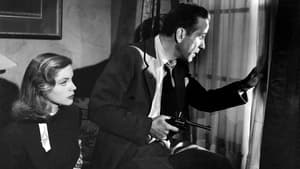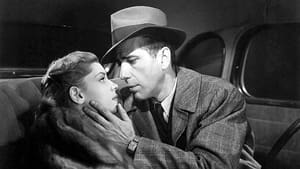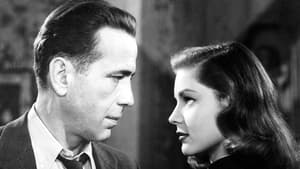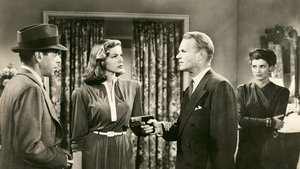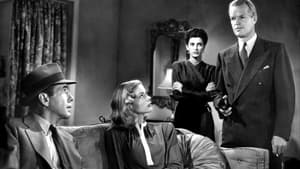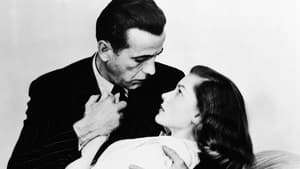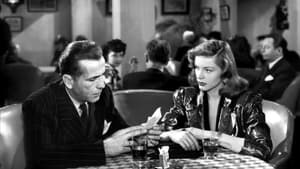Contact: [email protected]
Video Sources 0 Views
- Watch trailer
- The Big Sleep Colorized


Synopsis
[ez-toc]




Introduction
As the reels of time unravel, classic films hold an indelible place in the hearts of cinephiles. Among the treasures of old movies, “The Big Sleep Colorized” stands as a testament to the golden age of cinema, a film noir masterpiece that has now undergone a transformative journey – “The Big Sleep Colorized 1946.” In this article, we delve into the intricacies of this cinematic metamorphosis, exploring the nuances of its story, the stellar cast, the controversial colorization process, and the impact it has on the overall audience experience.
Read Media File Transfer Agreement: Terms and Conditions
Read FAQ
The Big Sleep Colorized: From Noir to Color
In the shadows of post-war America, “The Big Sleep” emerged in 1946, directed by the legendary Howard Hawks and adapted from Raymond Chandler’s gritty detective novel. Starring the iconic duo of Humphrey Bogart as the enigmatic private detective Philip Marlowe and Lauren Bacall as the seductive Vivian Rutledge, the film became a quintessential example of film noir. The decision to colorize this black and white gem was met with both anticipation and skepticism.
“The Big Sleep” was a defining work in the film noir genre, characterized by its dark and atmospheric storytelling, morally ambiguous characters, and intricate plots. Directed by the masterful Howard Hawks, the film brought to life the hard-boiled detective Philip Marlowe, portrayed with unparalleled charisma by Humphrey Bogart, and the sultry Vivian Rutledge, played by the incomparable Lauren Bacall.
Hawks skillfully navigated Raymond Chandler’s complex narrative, creating a cinematic experience that left an indelible mark on the noir landscape. The decision to colorize “The Big Sleep Colorized” was a bold endeavor, undertaken by those who sought to breathe new life into this classic while respecting its historical significance.
Understanding the Colorization Process
To bring “The Big Sleep Colorized” into the vibrant world of color, the filmmakers turned to the advanced colorization technology provided by AlwanFilm. This process, which meticulously infuses hues into the monochrome frames, aims to breathe new life into the visual aesthetics of old films. However, as with any artistic endeavor, the choice to alter the original format comes with its share of advantages and challenges, sparking debates within the cinematic community.
AlwanFilm, a pioneer in the field of colorization, employed cutting-edge technology to meticulously add color to each frame of “The Big Sleep Colorized.” This process involved analyzing the grayscale tones in the original film and digitally applying a carefully curated color palette. The objective was not to replace the black and white version but to offer an alternative viewing experience that pays homage to the film’s noir roots.
The advantages of colorizing old movies are apparent. It opens these classics to a new generation of viewers who may be less accustomed to the starkness of black and white cinematography. It provides an opportunity to appreciate the visual details that might have been overlooked in the original format. However, the challenges are equally significant, with purists arguing that colorization compromises the artistic intent of the filmmakers and alters the historical context of the film.
Examining the Cinematic Elements of “The Big Sleep Colorized”
In the gritty underbelly of 1940s Los Angeles, “The Big Sleep Colorized” unfolds as a riveting murder mystery intertwined with organized crime. Philip Marlowe, a wisecracking private detective, navigates through a web of deceit and danger, uncovering a tale of extortion and missing persons. The narrative intricacies set the stage for an exploration of the film’s cinematic elements, both in its original monochrome and its newly colorized version.
1. The Visual Aesthetic: From Shadows to Colors
The noir aesthetic of “The Big Sleep Colorized” is characterized by stark shadows and moody cinematography, hallmarks of the genre. With the introduction of color, the visual dynamics undergo a profound shift. The interplay of light and shadow, once the soul of the film, now dances in a spectrum of colors, transforming the very essence of its visual style.
In the original black and white version, the shadows played a pivotal role in creating a sense of mystery and suspense. The grayscale tones added a layer of ambiguity, leaving audiences to decipher the moral complexities of the characters. With colorization, the challenge was to preserve this atmospheric quality while introducing a new dimension.
The hues chosen by the colorization team were carefully curated to maintain the noir aesthetic. Deep blues, rich reds, and muted greens replaced the grayscale tones, infusing each frame with a sense of vibrancy. While some purists may argue that this alters the intended experience, proponents of colorization assert that it breathes new life into the film, making it more accessible to contemporary audiences.
2. Bringing Characters to Life through Color
Humphrey Bogart’s portrayal of Philip Marlowe is legendary, and the colorization process adds a layer of depth to the character. The subtle nuances of Marlowe’s personality, his resilience, and vulnerability are accentuated by the carefully chosen color palette. The protagonist, once shrouded in shades of gray, now emerges as a vivid and complex figure.
The colorization of Bogart’s iconic trench coat, previously a grayscale element, becomes a visual focal point. The rich brown hue adds a tactile quality to Marlowe’s attire, emphasizing his lived-in world-weariness. Lauren Bacall’s Vivian Rutledge, with her smoky eyes and crimson lipstick, takes on a new allure, blending seamlessly with the vibrant backdrop of 1940s Los Angeles.
3. The Significance of Setting in Colorized Films
Los Angeles, with its noir cityscape, plays a pivotal role in shaping the film’s atmosphere. The colorization of the setting breathes vitality into the urban sprawl, capturing the vibrancy of the city in a way monochrome never could. The importance of setting in colorized films becomes evident as it becomes a character in its own right.
The neon signs, the bustling streets, and the chiaroscuro of the city at night all come alive in a palette of colors. The transformation of Los Angeles from a grayscale backdrop to a kaleidoscope of hues adds a layer of complexity to the narrative. It becomes a testament to the symbiotic relationship between a film and its setting, showcasing how colorization can enhance the immersive experience.
The Big Sleep Colorized 1946: A Successful Transformation or Lost in Translation?
As the story unfolds, themes of extortion and missing persons take center stage. The colorized adaptation prompts a nuanced examination of how these themes resonate in both versions. Furthermore, the exploration of romantic relationships within the film provides a lens through which to evaluate the impact of colorization on the emotional fabric of the narrative.
The narrative complexities of “The Big Sleep Colorized” remain intact in the colorized version. The intricate web of deception, the morally ambiguous characters, and the relentless pursuit of truth are all preserved. However, the shift in visual aesthetics does invite a reevaluation of certain thematic elements.
In the realm of extortion and missing persons, the colorized version offers a heightened sense of urgency. The use of color to distinguish key elements in the narrative provides clarity without sacrificing the inherent ambiguity of Chandler’s storytelling. The emotional resonance of romantic relationships is also intensified, with the colors serving as a visual metaphor for the complexities of love and deceit.
Reviving a Classic: The Impact of Colorization on Audience Experience
The atmospheric elements that define the noir style are essential to the audience experience. The colorized version of “The Big Sleep Colorized” invites viewers to immerse themselves in an altered yet captivating atmosphere. The chemistry between Bogart and Bacall, a cornerstone of the film, takes on new dimensions, enriching the overall narrative. The viewing experience becomes a bridge between two eras, offering a unique perspective on a classic.
The success of the colorization process can be measured in the engagement of the audience. For those unfamiliar with the nuances of classic black and white cinema, the colorized version of “The Big Sleep Colorized” serves as an accessible entry point. The visual allure of vibrant hues, coupled with the timeless appeal of the noir genre, creates an immersive experience that transcends generational gaps.
The chemistry between Bogart and Bacall, intensified by the colorization process, becomes a focal point of audience engagement. The subtle glances, the smoky gazes, and the tension between the characters are heightened by the addition of color. It invites viewers to not only witness the unfolding drama but to feel a part of the intricate web of relationships woven by the characters.
Should Old Movies Be Colorized? Debating the Future of Film Preservation
The debate surrounding the colorization of old movies extends beyond “The Big Sleep Colorized.” It raises questions about film preservation and artistic integrity. While some argue that colorization breathes new life into classics, others contend that it compromises the authenticity of the original vision. As we grapple with the intersection of technology and tradition, the fate of old films hangs in the balance.
Film preservation is a sacred duty, ensuring that the cinematic heritage of bygone eras is passed down to future generations. However, the question arises: does preserving mean leaving untouched, or does it involve adapting to the evolving tastes and preferences of contemporary audiences? The colorization debate is at the forefront of this dilemma.
The purists argue for the preservation of films in their original black and white format, emphasizing the importance of maintaining the artistic integrity envisioned by the filmmakers. They see colorization as a form of tampering, altering the intended experience and diluting the historical significance of these cinematic treasures.
On the other hand, proponents of colorization see it as a means of democratizing classic cinema. By adding color, these films become more accessible to a wider audience, especially younger viewers who may find black and white movies less engaging. It becomes a bridge between the past and the present, allowing the magic of old movies to transcend the constraints of time.
The Big Sleep Colorized 1946: A Controversial Yet Captivating Adaptation
In conclusion, “The Big Sleep Colorized 1946” emerges as a cinematic transformation that treads a fine line between controversy and captivation. The decision to add color to a classic film is not without its challenges, but it offers a fresh perspective for a new generation of viewers. As we navigate the delicate balance between preserving the past and embracing the future, “The Big Sleep Colorized 1946” invites audiences to reconsider the boundaries of cinematic artistry and its timeless allure.
The controversy surrounding colorization is not a new one, and it will likely persist as technology continues to advance. “The Big Sleep Colorized 1946” stands as a testament to the ongoing dialogue about the intersection of tradition and innovation in the world of cinema. It prompts us to question whether the essence of a classic film lies solely in its original form or if it can adapt and evolve without sacrificing its intrinsic value.
Ultimately, the experience of watching “The Big Sleep Colorized 1946” is a subjective one. For some, it may be a sacrilege to tamper with the black and white brilliance of the original. For others, it is a refreshing take that allows them to connect with a classic in a more relatable manner. Whichever side of the debate one falls on, there’s no denying the film’s unique place in cinematic history – a bridge that spans the gap between the old and the new, the monochrome and the colorful, leaving us to ponder the ever-evolving nature of our cinematic journey.
